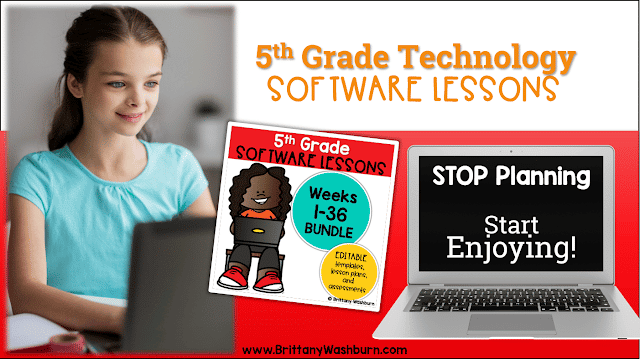Discover the Secret to Engaging Young Minds with Innovative Tech Tools

Engaging young minds with innovative technology tools has become an essential strategy for promoting student success. By harnessing the power of technology, educators have the opportunity to captivate students’ interest, boost their motivation, and cultivate a dynamic learning environment that caters to diverse learning styles. Delve into the secrets behind effectively integrating tech tools in schools, and explore the benefits, challenges, strategies, and outcomes that usually come up along the way.
Do I Need Tech Tools to Engage Young Minds?
No, you don’t need tech tools to engage young minds. However, it does help.
Enhanced Learning Experiences
Forget dusty textbooks and boring lectures – tech tools have the power to transform dull lessons into interactive adventures. With the right tools, students can dive into virtual worlds, conduct virtual experiments, and even travel through time (figuratively, of course). Learning becomes not just a task but an experience worth remembering.
Improved Student Motivation and Participation
Picture this: a classroom buzzing with excitement, students eager to share their thoughts, and an atmosphere so engaging that even the back-row sleepers are wide awake. That’s the magic of tech tools in action. By tapping into students’ interests and learning styles, technology can boost motivation, spark curiosity, and turn passive listeners into active participants. It’s like throwing a party, and everyone’s invited (even the shy ones hiding in the corner).
Build Digital Literacy
Before your students can truly benefit from innovative tech tools, they need to be able to navigate them.
Take a look at these core areas to build digital literacy before you jump headlong into the fray:
- How to Teach Basic Computer Skills to Preschool Students
- Tech Teacher Guide to Introducing Computer Science
- Tips and Strategies for Teaching Young Students to Log In to Computers
- The Importance of Keyboarding in Kindergarten and How to Integrate Keyboarding Lessons into your Curriculum
- Tips for Teaching Elementary Students how to Choose Digital Tools
Make it Exciting
Say goodbye to boring worksheets and hello to engaging learning apps that make education feel more like a game than a chore. Whether it’s gamified quizzes, interactive simulations, or collaborative platforms, these apps bring a touch of magic to the classroom, making learning not just effective but downright enjoyable.
There are so many fantastic and innovative apps that can engage young minds! We compiled A Comprehensive List of The Top Educational Apps that can guide you to exactly what you need for your students.
We can also show you How to Create Interactive Digital Activities for Elementary Students. There are many types of interactive digital activities that can be used for elementary learners. These include educational games, quizzes, simulations, and digital storytelling. These benefits can help students to become more active and enthusiastic learners, which can boost their academic performance and overall well-being.
Consistently Implement Quality Tech Tools
So, you’re sold on the idea of tech tools, but how do you actually make them work in the classroom without causing a digital disaster? Fear not, dear teachers, for we have some top-notch strategies up our sleeves to guide you through the tech jungle.
Integrate Your Tech Tools
Innovative tech tools can be used to upgrade your teaching in almost every subject. Technology Integration is your best friend!
Get your students to practice building foundational tech skills while working on their core academic subjects right from the start. TECHademics are web based, digital Math and ELA activities for primary grades.
Online Collaboration Tools provide opportunities for students to work on assignments together, which helps to develop teamwork and communication skills. Students can learn to express their ideas effectively, actively listen to others, and work collaboratively to achieve a shared goal.
Teach your students to use tech tools to research information in any discipline! We have already have a guide on How to Teach Online Research Skills to Elementary Students as well as recommended Picture Books that Teach Students Online Research Skills.
Measure Student Performance and Progress
Tech tools offer valuable data on student performance that can inform teaching strategies. Schools should track metrics like attendance, grades, and engagement levels to assess the effectiveness of tech integration and make data-driven decisions.
You may also want to consider making Digital Portfolios a regular part of your student evaluation processes. Digital portfolios offer many advantages, including fostering student engagement, promoting self-reflection, increasing parental involvement, and enhancing assessment practices. They also provide a comprehensive and easily accessible way to document student progress over time.
Bring Out the Best Innovative Tech Tools
Coding
Coding and programming are essential skills for anyone interested in technology. Teaching coding nurtures crucial cognitive abilities such as problem-solving, creativity, and critical thinking. Teaching these skills early will benefit students regardless of what subjects they gravitate towards later.
You can also incorporate coding into other subjects, working around objections regarding the class time teaching programming may demand. Check out our guide to Teaching Coding and Programming: Best Practices for Elementary School Teachers!
Robotics
But why stick to coding with your students when you can do so much more? Robotics kits are an exciting and educational STEM project that can be accessible for kids even in preschool. Robotics kits take it to the next level by familiarizing students with the components that make up a robot. They furthermore teach students first-hand how assembling the components through different means and in different configurations assists the robot in accomplishing its intended purposes. Robotics kits align particularly well with STEM goals because they sprawl across the realms of applied science, technology, engineering and of course math as well.
We even have a few recommendations for Cool Robotics Kits for Kids you may want to start with.
Virtual Reality
Step into the future with virtual reality – the tech tool that can transport students to far-off lands, ancient civilizations, or even inside the human body (no shrinking required). With VR headsets and immersive experiences, learning becomes a full-body adventure, engaging students’ senses and imagination in ways traditional methods simply can’t match.
Virtual and augmented reality is another great category of tools to use with young learners, whose imaginations are already so vibrant. Conversely, they also benefit from concrete, visual examples. Apps like Wonderscope bring stories to life, students can build their own solar systems, and virtual field trips can broaden their horizons even further. Our selection of 15 of the Best Virtual Lesson Topics has a bunch of great activities to try as well.
Keep the Ball Rolling
Professional Development for Teachers
First things first – equip yourself with the knowledge and skills needed to wield tech tools like a pro. Professional development workshops, online courses, and peer-to-peer training can help you master the art of integrating technology in your teaching practice. Remember, even the best tools are useless in the hands of someone who doesn’t know how to use them.
Creating a Tech-Positive Learning Environment
Setting the stage for tech success requires more than just fancy gadgets and gizmos. Cultivate a tech-positive culture in your classroom by fostering a safe, supportive environment where experimentation is encouraged, mistakes are embraced, and learning is a collaborative adventure. With the right mindset and a sprinkle of tech magic, you’ll soon have students clamoring for more digital learning experiences.
Gather Feedback from Students and Educators
Listening to those directly impacted by tech integration is crucial. Students and educators should be encouraged to share their experiences and provide feedback on what works well and what can be improved, ensuring that tech tools are meeting the needs of all stakeholders.
Communicating with Parents in the Process
Parents are key partners in a child’s education journey. Schools should keep parents informed about tech initiatives, provide resources for using technology at home, and seek input on how to best support their child’s learning with innovative tools.
Maintain Balance
From the beginning, we should be Teaching Meaningful, Mindful and Moderate Technology Use.
Even if it may be a while until children learn to monitor and manage their own screen time, teaching them to think about balancing these things and making conscious choices early will give them a foundation to build good habits on!
Move Forward
With thoughtful implementation and ongoing assessment, innovative tech tools can truly revolutionize education and unlock the potential of every young mind. It is clear that the potential to engage young minds and enrich learning experiences through technology is vast and promising. By embracing these tools, educators can unlock new possibilities for student engagement, creativity, and collaboration. Let us continue to harness the power of innovation to inspire and empower learners of all ages on their educational journey, ultimately equipping the next generation with the skills and knowledge needed to thrive.
So there you have it, folks – the secret to engaging young minds with innovative tech tools in school. Dive in, explore, and most importantly, have fun transforming your classroom into a tech-powered wonderland. The future of education is knocking on your door – will you let it in?






